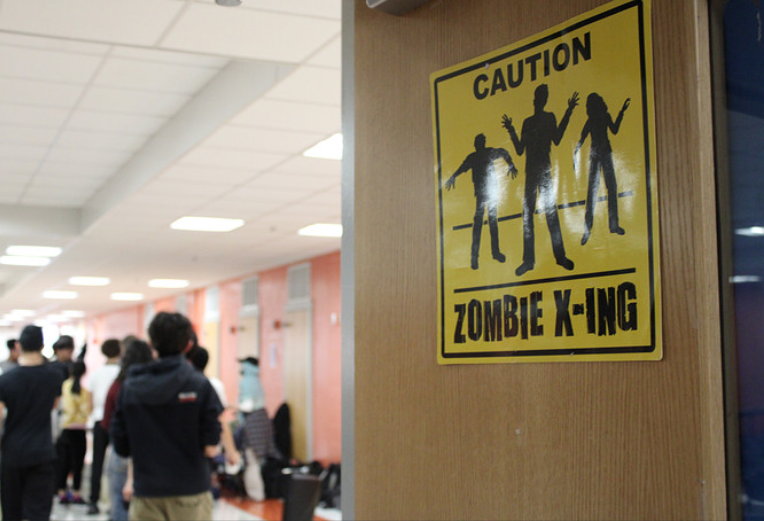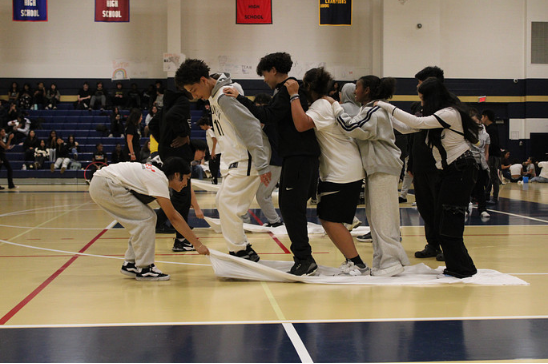Zachary Nedell also contributed to this article.
Most students wake on an average Monday morning expecting to go to class. But on October 17th, no Malden students were in class. From 7:45 onwards, Malden’s teachers, aides, and other staff were not in their classrooms. Instead, they gathered outside their schools, officially on strike.
The strike had been announced the night prior, after the School Committee and the bargaining committee of the Malden Education Association (MEA) failed to reach a consensus. With a deadline of midnight, RoboCalls and emails were sent out to families – before 8pm – that there would not be school the next day.
The strike, as pointed out by Superintendent Ligia Noriega-Murphy, was illegal. Back in 1919, the Boston police force went on strike due to their wages and working conditions. During the four days of strike, though, the city experienced several nights of heightened crime, leading to the deaths of nine. The Governor at the time, Calvin Coolidge, declared public sector strikes illegal.
Despite the known laws surrounding the strike, Malden staff refused to enter the buildings. Haverhill staff joined them in this protest, also garnering for new contracts.
At Malden High, teachers gathered around the Brunelli steps. Staff registered their attendance through QR codes and forms, before making their way into the crowd. At approximately 8:15am, MEA Vice-President Rachel LeBlanc made the first speech of the day, followed by a few select others.
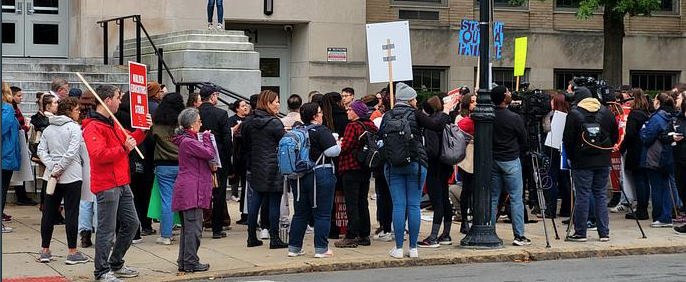
Staff, students, local news reporters, and union representatives meeting outside the Brunelli Steps. ZHI ZHU
Following the speeches, MHS staff split into groups and divided across the perimeter of the school. Each group managed their own form of striking. They parted ways chanting, “When we strike, we win,” as a spin off of the chant “When we fight, we win,” as seen at previous events.
Near the Tiny House and community garden, one group of staff was handing out leaflets about the MEA and why they were striking. Some members marched back and forth chanting numerous calls, while others sat or stood while talking to pedestrians. The leaflets were found in multiple languages, outlining the MEA, the protest, and what the bargaining team was fighting for. It also included a QR code with more information for those interested.



(Top) Leaflets in six languages defining the MEA and their mission.
(Bottom left & right) Malden High staff near the Tiny House holding signs about the cause.
DANI LICONA-CRUZ
The next group was spread from the gym entrance to the intersection on the corner of Holden Street and Eastern Avenue. With signs galore, teachers chanted and cheered from the sidewalk and street median to amass the most attention. With cars whizzing by, this location was exemplary for attracting new eyes to the scene.
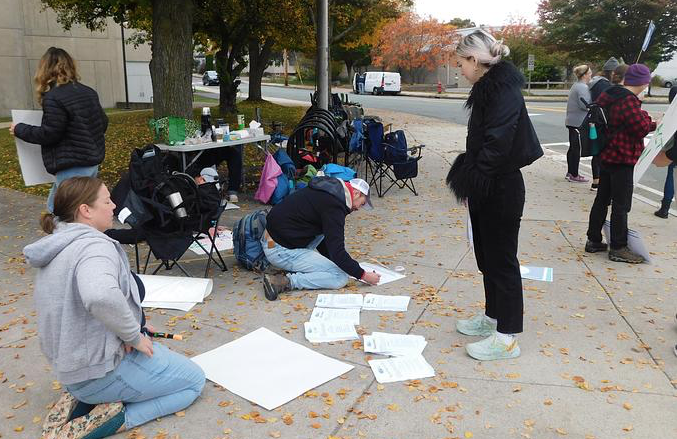
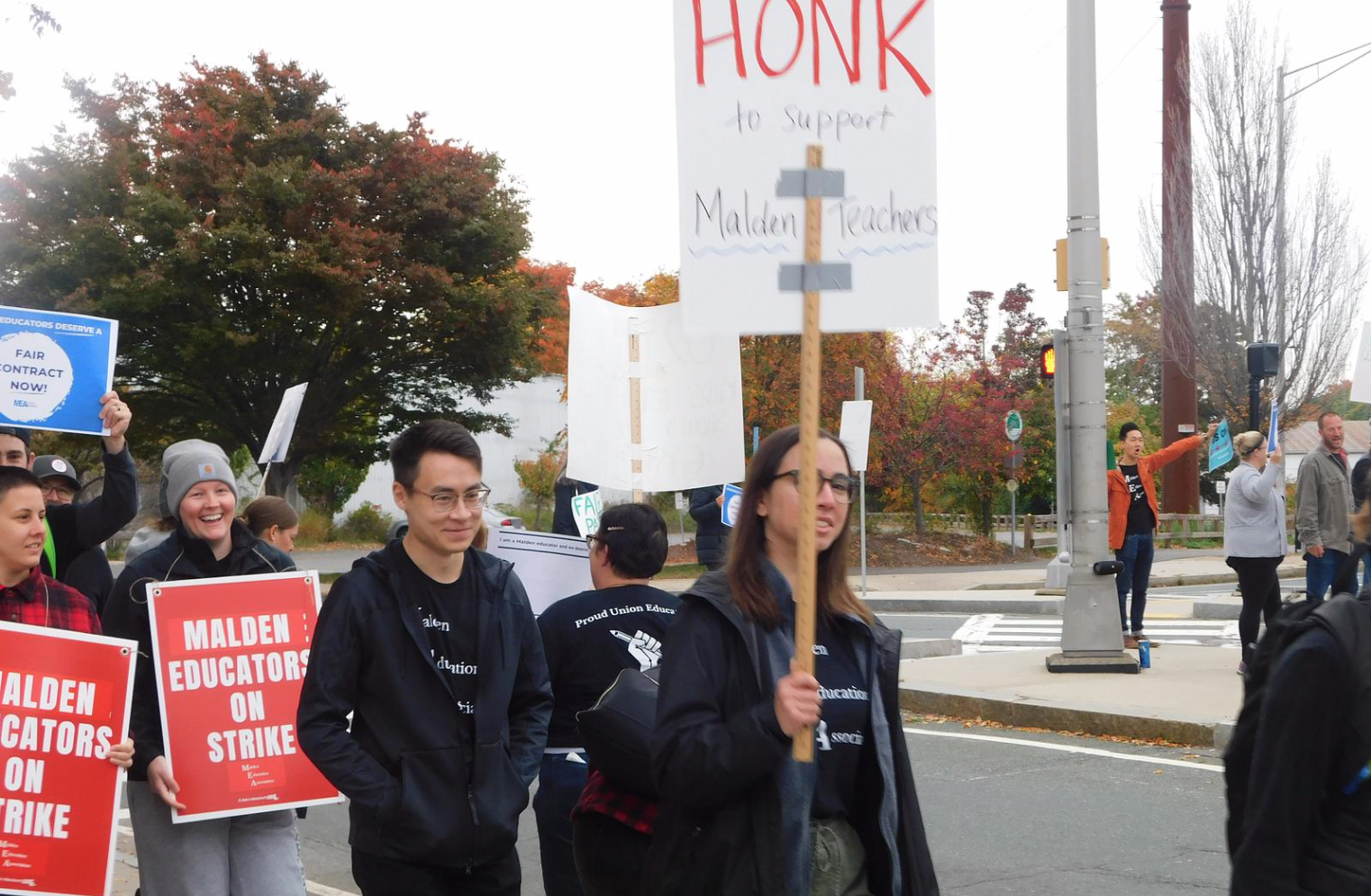
(First) Staff preparing signs and posters for the strike.
(Second) Staff marching along the corner of Holden Street and Eastern Avenue.
DANI LICONA-CRUZ
The following group was the most physically active, marching back and forth down Eastern Avenue. Gesticulating signs, the group chorused their protests through a myriad of call-and-responses and numeral rhymes.



(All photos above) Staff marching collectively along Eastern Avenue.
DANI LICONA-CRUZ
As this group marched, the end of their loops intersected with a group at the edge of Ferry Street. Similar to the group by the Tiny House, this group set up a table with a spread of leaflets and information. The staff created a semi-circle behind and around the table at the ready to spew more information.
Penultimately, an quite possibly the loudest group, was gathered in front of the Malden High School emblem on the corner of Ferry Street and Salem Street, adorned with signs and cow-bells. The staff marched the corner, rang their bells in unison, and chanted to their beats.
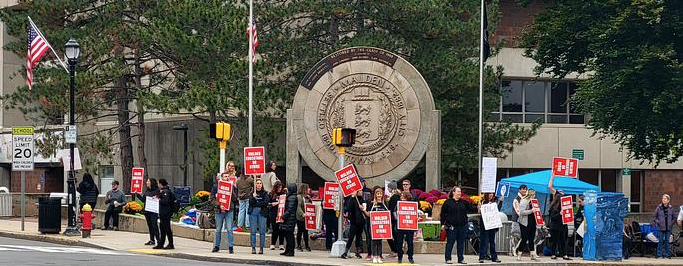
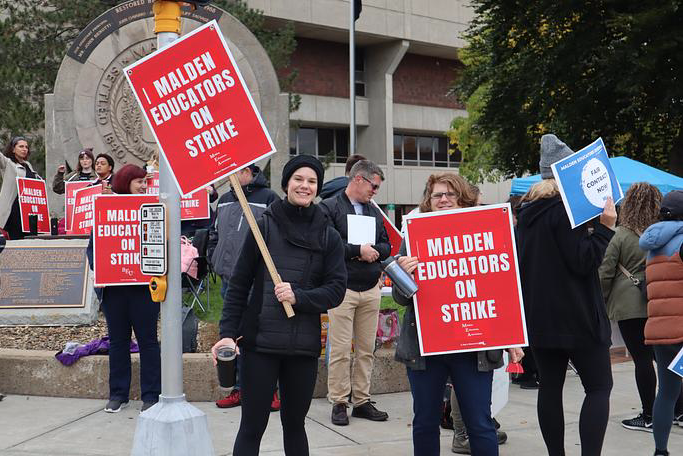
Staff collecting on the corner of Ferry Street and Salem Street.
(Top) ZHI ZHU
(Bottom) JESSICA LI
The final group could be found up and down Salem Street. Led by history teacher Jessie Belfer and French teacher Paul Degenkolb, two smaller groups of teachers marched around each other, dulcetly chanting their indignation.



(All photos above) Staff and students showing their pride with signs, cheering, and chanting. DANI LICONA-CRUZ
Malden High was not the only school on strike, though: every public school in the district shut down due to the strike. Forestdale held most people in front of the main steps; Salemwood hosted its staff from edge to edge of the property on Salem Street; Beebe staff was spread across the front entrance area of the property; Linden displayed their unity across Wescott Street; and Ferryway held protests on Ferry and Cross Street.








(Top two rows) Staff at Salemwood display their posters in support. JESSICA LI
(Third row) Salemwood workers showing their solidarity in the cause. DANI LICONA-CRUZ
(Fourth and fifth rows) Beebe employees uniting with signs and banners to exhibit their opinions. DANIEL O’TOOLE
Despite the teachers being found all across the city, they were one body and one union fighting for the same cause: their new contracts. More information about the contracts can be found here.
Union President Deborah Gesualdo detailed her day: “My Monday started with a meeting with our building leads and picket captains at 6:45am. We went over details for the day, helped everyone load supplies into their cars, and then everyone went to their schools.” Although Gesualdo was not one of the main people organizing the strike, she did play an important role.
The strike vote happened on the Friday before, under the conditions that it would commence if an agreement was not reached before Sunday nights. “That type of vote is VERY serious and not something I, or any educator, goes into without much thought and without believing it is truly a last resort. Actually going through with the vote was scary, but also empowering for the majority of the rank-and-file members of the MEA.” She elaborated that “It was scary because it’s such a big action, but empowering because we knew we were taking back the dignity and respect that had been taken from us in the workplace. We also knew we were fighting for the schools our students deserve–we know that our students deserve the very best when it comes to their education and our schools.”
“From there, I went to 5 of our 7 schools to be on the picket line with my union family…The MEA Coalition Bargaining Team and I assembled a Contract Action Team to get out into the schools and have conversations with the rank-and-file members of the MEA to listen to their concerns and find out what types of actions they wanted to take as a union.” She joked that she “also did more media interviews than I can even remember.”
Following that, “We found out in the early afternoon that the School Committee was willing to begin bargaining again. We went to part of the rally and then into City Hall for bargaining–I believe we were there until at least 9:00pm.”
That bargaining session was a success, and the School Committee and MEA reached a tentative agreement, which was voted into action on Oct. 20th. School resumed on Tuesday.
Gesualdo concluded that “Taking such a big action is very serious and not something anyone wants to do. I sincerely hope we never feel like we are at the point of having to take a last resort action again.”


